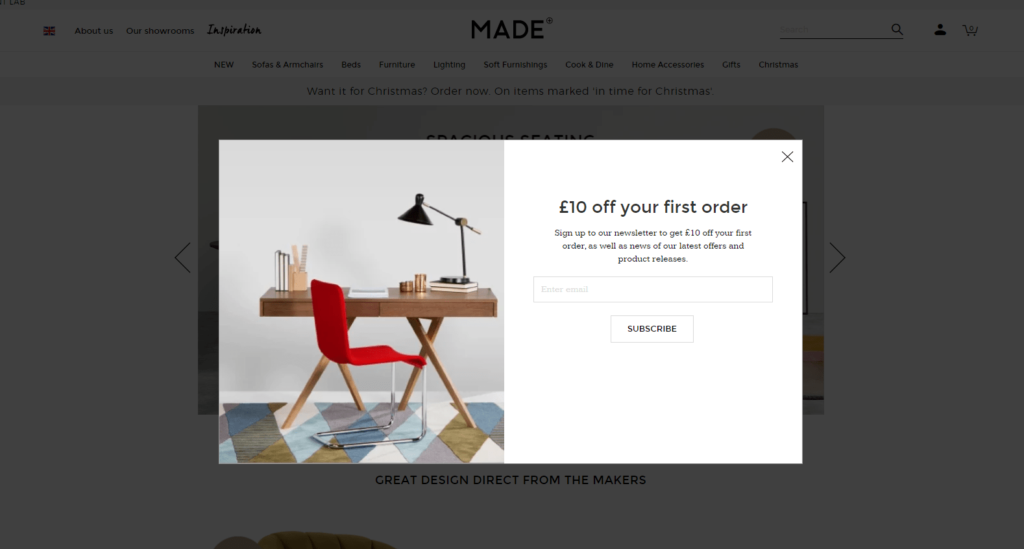
How to combine content marketing and popups to capture qualified leads?
You invest time and resources in content marketing, but your visitors leave without leaving their contact information? This is a common problem: attracting traffic is not enough, you also need to convert these visitors into qualified leads. Popups, when used well, provide an effective solution to capture attention at the right moment and encourage engagement without harming the user experience. How can you smartly combine these two levers to maximize your conversions? Discover our strategies to transform your audience into engaged prospects!
1. Why is content marketing alone not enough to capture leads?
Content marketing is one of the pillars of digital acquisition. It allows attracting a qualified audience through blog articles, videos, case studies, or white papers. However, attracting traffic does not necessarily guarantee conversion. Many visitors consume content without taking action, which limits the strategy’s effectiveness in generating leads.

Content marketing attracts but does not always convert
While content marketing plays an essential role in the buying journey, it has certain limitations:
- A passive engagement: A user can read an article, watch a video, or consult a guide without ever leaving their contact information.
- A lack of call to action: Unlike a sales page, an informative blog does not directly drive conversion.
- A high bounce rate: According to a study by Sumo, 98% of visitors leave a site without interacting.
Without an effective mechanism to capture attention and collect contacts, a content strategy risks losing many potential prospects.
How do popups fill this gap?
Popups are an effective solution to turn a passive reader into an active lead. When relevantly integrated, they can encourage action at the right moment.
- Immediate capture: Popups can intercept attention before the user leaves the page, especially with exit-intent popups.
- Clear value proposition: Offering premium content (ebook, checklist, webinar) in exchange for an email address encourages visitors to sign up.
- Personalization: A contextual popup displayed based on the visitor’s behavior (time spent on the page, number of articles read) optimizes conversion.
➡️ Concrete example: A digital marketing blog might offer a popup providing a downloadable guide “The 10 SEO Strategies for 2024” to readers who have viewed at least two articles on SEO.
The strategic integration of popups in a content strategy thus allows to fully leverage the audience’s potential and increase the number of qualified leads without compromising the user experience.
2. Strategies for effectively integrating popups into your content marketing
Attracting a qualified audience with quality content is one thing, but knowing when and how to trigger a popup to maximize conversion is another. A well-thought-out integration of popups in a content strategy can transform a simple reader into a qualified lead, without altering the user experience.

Match the right type of popup with the right content
Each content format calls for a specific approach to popups. Here are some strategic associations:
- Blog articles → Integrate a popup offering an ebook or a downloadable checklist related to the article’s topic.
- Product pages → Display a popup offering a discount to encourage purchase or a free trial.
- Videos & webinars → Offer a registration popup in exchange for access to exclusive content.
- Guides & case studies → Popups integrated after a certain reading time, offering complementary content for download.
➡ Concrete example: A site specializing in personal finance might offer, after a few seconds of reading on a savings article, a popup like: “Download our free guide to the best investment strategies in 2024”.
Best practices to maximize conversions
To avoid popups becoming intrusive and counterproductive, it is essential to respect some fundamental rules:
- Intelligent timing:
- Avoid immediate appearance of popups upon entering the site.
- Favor triggers based on user behavior (exit-intent, time spent on page, scrolling to 50%).
- Optimized design and UX:
- Create popups visually appealing, but non-aggressive.
- Provide a clearly visible close button to avoid any frustration.
- Test non-intrusive formats like slide-in side popups.
- Personalization and segmentation:
- Display popups only to relevant visitors (regular readers, users who have viewed multiple pages).
- Tailor the message based on consumed content and the user journey.
➡ Example of optimization: Tools like Poosh allow the display of personalized popups based on browsing behavior, thus ensuring better conversion without harming the user experience.
Popups as a driver for engagement and loyalty
Contrary to popular belief, well-integrated popups are not a barrier to navigation, but a powerful lever for engagement. A study by Sumo shows that well-optimized popups can generate an average conversion rate of 3.09%, with some even reaching 9.28%.
By combining quality content and smart popups, you capture visitors’ attention more effectively and maximize your conversion opportunities, while ensuring a smooth and pleasant user experience.
By combining content marketing and strategic popups, you transform your audience into qualified leads. Optimize your popups, test different approaches, and maximize your conversions without harming the user experience. Take action now!